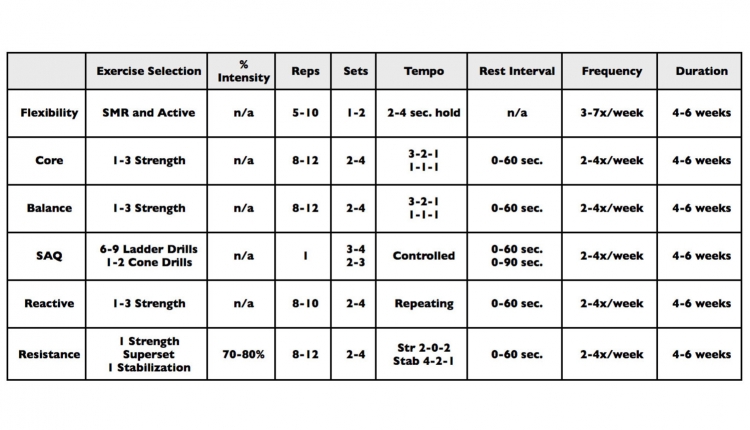In order to meet the goals, needs, and demands of each person that will walk through our doors we must have a solid understanding and complete mastery of the Nine Governing Principles of Exercise Science. These principles provide the scientific rational for personal training, strength and conditioning, athletic training, physical therapy, sports medicine, etc.
Too often trainers find themselves getting stuck in a rut or lose focus of the importance of exercise selection and programming. Below is a quick reference list of the Nine Governing Principles of Exercise Science.
Overload - For the body to make changes it must be challenged and stressed. Overload is simply performing more repetitions than were performed in the last workout or using a heavier resistance that you are accustomed to for a specific exercise or adding more time or distance to a cardiorespiratory bout than previously performed. Remember, there are three components to this principle: 1) Alarm, 2) Reaction, 3) Exhaustion.
Specificity - Often referred to as the SAID principle (Specific Adaptation to Imposed Demands). This means that the body will specifically adapt to the type of demands placed on it. By controlling the stimulus you can control the outcomes. You get out of training what you put in. Remember, there are three components to this principle: 1) Mechanical, 2) Neuromuscular, 3) Metabolic.
Progression - In order to have a sound training program there must be a systematic and logical progression to the selection and advancement of exercises.
Variation - Variety is important in your exercise selection but never let your excitement about a new piece of equipment or movement pattern dictate your exercise selection.
Individuality - Personal training is exactly that, personal. Every client you train brings to their session their own individual set of strengths, weaknesses, muscular imbalances, level of flexibility, VO2 score, joint issues, stresses, hydration levels, blood sugar levels, goals, needs, etc. This principle helps illustrate the point that there should NEVER be a time when a program should be duplicated all day long with each client you train.
Diminishing Returns -This principle is best illustrated through the example of a client that needs to lose a 100 pounds, the first 80-90 will be the easiest for them to lose but the last 10 will be the most difficult. The point here being that as a client gets closer to reaching their goals the goal becomes more challenging to attain. Thus reaching the goal becomes even more dependent on good sound program design and the inclusion of the Nine Governing Principles of Exercise Science.
Reversibility - This is easy to recognize and simple to regain. When your client chooses to stop exercising for any period of time there will be losses in their flexibility, cardiorespiratory, muscular strength and muscular endurance abilities. Here the old adage is true "if you don't use it you will lose it." Remember to perform a quick static and dynamic postural assessment on your client each time they come in for their training sessions, especially if there has been a lapse in their normal training schedule.
Recovery - In order to prevent "over training" (the "exhaustion" phase of overload) it important to take into account your client's ability to recover. Recovery includes both rest (sleep) and nutrition. If either are off they will not be able to fully repair the damage (micro-trauma) from their workouts.
Safety - This is always paramount. Safety can wear many hats for including but not limited to environment, equipment, and exercise selection. There needs to a larger awareness placed on the safety of exercise selection. I have seen many clients perform many a frightening exercise of late because their trainer told them to or they saw it online, etc. We have to remember as fitness professionals that our clients will do what we ask of them because they trust us and feel that we always have their best interest in mind. If you cannot or would not perform the exercises yourself then you should not ask your clients to do the same. For example, Is running up and down an un-manicured hill with arms overhead holding a 10-15 pound medicine ball as quickly as you can an example of a safe and effective exercise? When in doubt, ask yourself "yes, but why would you?" If you cannot provide a sound and logical explanation that is rooted in science perhaps you are not choosing the best exercises.
Related to:
Dec. 15 2012













